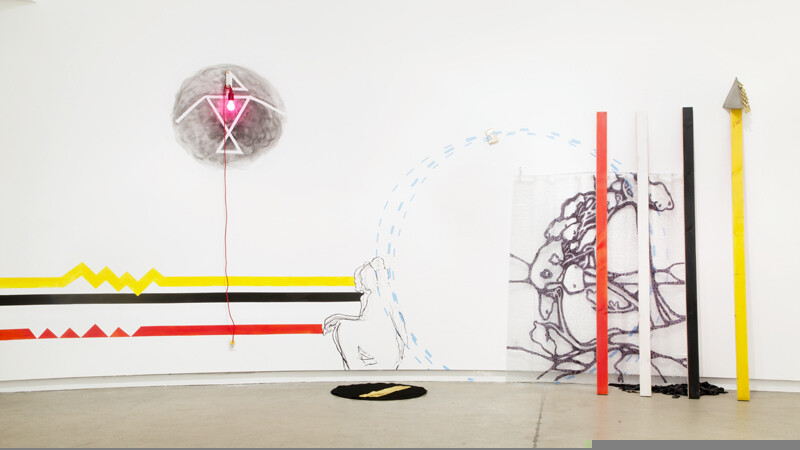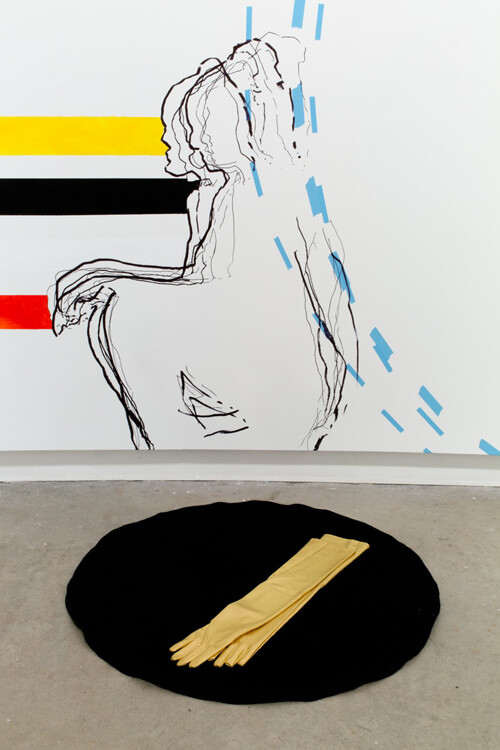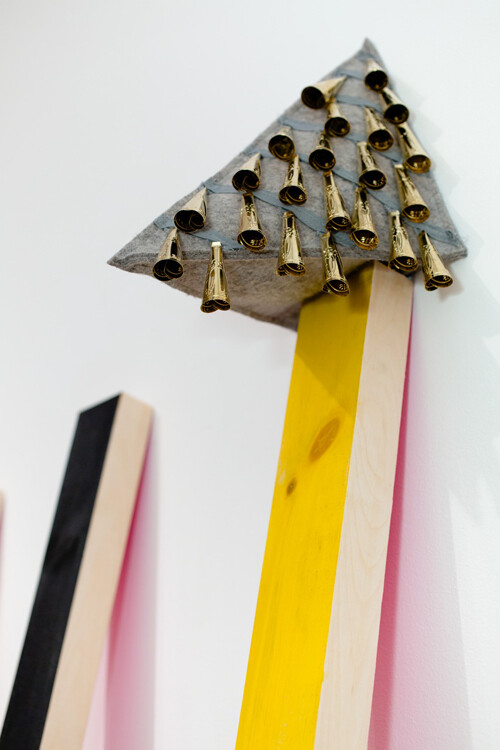


East Wind Brings a New Day: Revisited
East Wind Brings a New Day: Revisited (2015), a supergraphic wallwork and installation by Brooklyn-based artist Maria Hupfield, juxtaposes images of the Ontario landscape with sculptural elements that reflect Anishinaabe culture. The central element in the installation is a shower curtain upon which Hupfield has cheekily painted a version of ‘Group of Seven’ progenitor Tom Thomson’s iconic early 20th-century West Wind in the ‘Indian Group of Seven’ member Norval Morrisseau’s equally iconic 1970s Woodlands style. Thomson’s curvilinear Art Nouveau stylization melds seamlessly with Morrisseau’s biomorphism. Seeing a version of the Georgian Bay’s storm-battered West Wind pines transplanted into a setting of domestic décor (and personal hygiene) is bracing, and humourously mirrored by the smudged drawing of a Thunderbird on the wall above from which a lit pink light bulb hangs on a red electrical cord. Further along, four pine two-by-four studs lean against the wall; the back of studs are painted fluorescent pink which reflects onto the wall; each individual stud is painted in one or the colours of the four directions—red, yellow, black, white—echoing the perpendicular supergraphic rendering of water and sky on the adjacent wall.
Hupfield includes a number of objects in her installation that she has used in her performances that combine references to Anishinaabe practices and storytelling, the history of performance art and contemporary culture. Perched atop one of the pine boards is a felt pyramid decorated with gold metal jingles, noisemakers traditionally made by Ojibwa women from rolled chewing tobacco lids that are sewn onto dresses used in a healing dance. On the floor is a black felt circle, the implied site of a performance, upon which sits a pair of gold lamé evening gloves; above, taped to the wall is a gold Mylar survival blanket. Drawings of the artist’s crouching silhouette appear on the wall at floor level, and indicate her presence while she worked on the installation. Had we been present to see the performance the artist left of the remnants of, we would surely have witnessed Hupfield hybridizing, internalizing, colouring and eventually bringing the First Nations and European grand narratives of the natural world indoors.

The Blackwood
University of Toronto Mississauga
3359 Mississauga Road
Mississauga, ON L5L 1C6
[email protected]
(905) 828-3789
The galleries are currently open. Hours of operation: Monday–Saturday, 12–5pm.
Facebook | Twitter | Instagram
Sign up to receive our newsletter.
The Blackwood is situated on the Territory of the Mississaugas of the Credit, Seneca, and Huron-Wendat.